Subaru: Three electric cars in one go
Subaru has always stood for 4x4 and smooth-running boxer engines, whether diesel or gasoline. Now, however, it is time to rethink, as the Japanese all-wheel drive specialists are continuing to rely on the existing boxer range, but are launching three electric models in Europe.
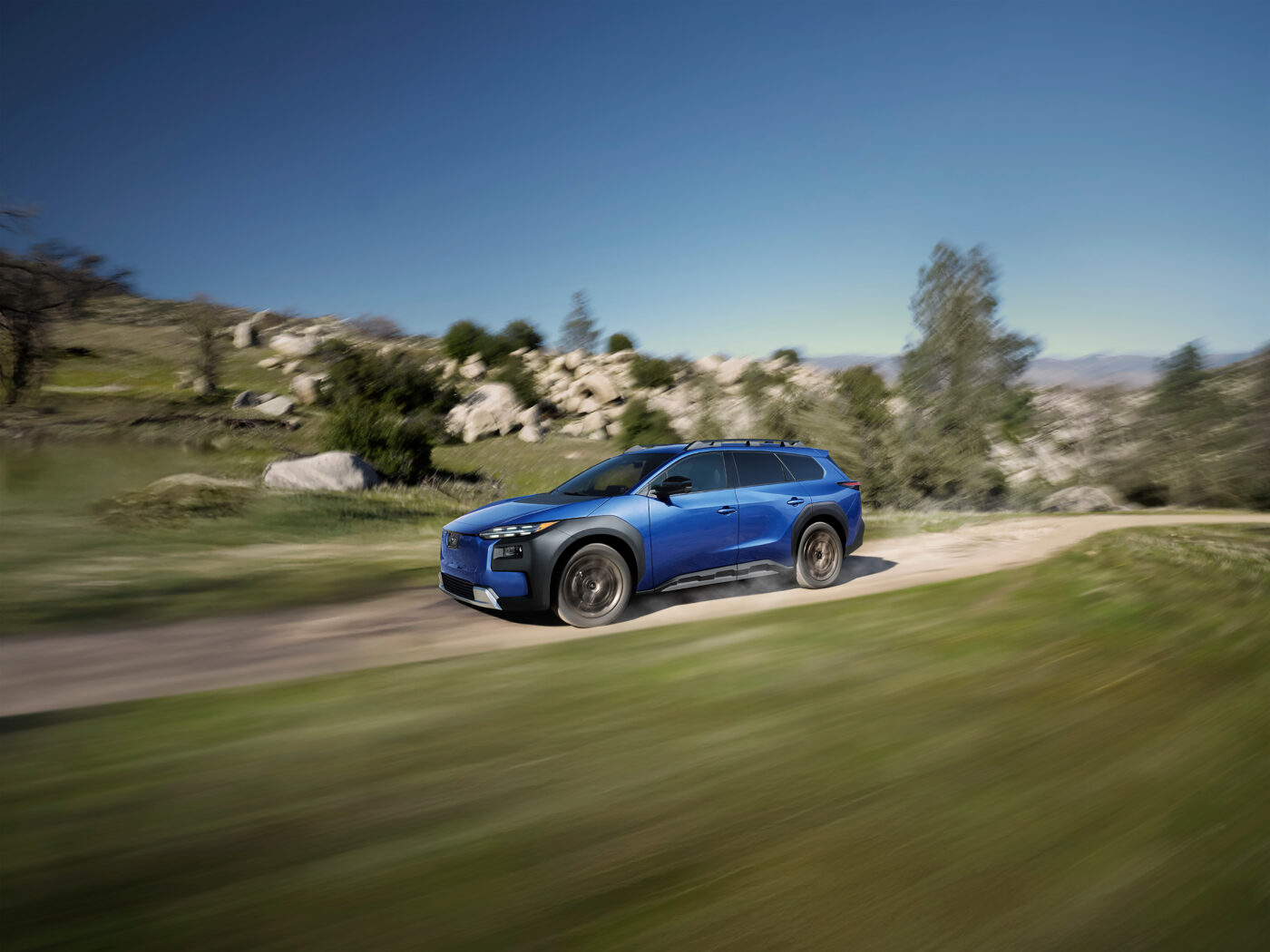
By the end of 2025, or from 2026 at the latest, Subaru will be fully electrified. This is made possible by an electric platform developed together with technology partner Toyota, which offers more power, a greater range and faster charging. In addition to the revised Subaru Solterra, a new electric outback and the completely new Subaru Uncharted electric model will soon be arriving at Swiss dealerships from the all-wheel drive specialist. A software-controlled all-wheel drive system now distributes the torque automatically and intuitively between the front and rear axles to further improve grip, traction and cornering, even on slippery surfaces.
 More power, range and traction
More power, range and traction
The Solterra is expected to make its debut towards the end of 2025. The revised E-SUV is immediately recognizable by its new, slimmer front end. Much more important, however, are the technical modifications under the stylish hood. The Solterra is clearly more dynamic on the road, as the two electric motors on the front and rear axles now deliver 249 kW/338 hp, which is easily 120 hp more than before. This means that the crossover now sprints to 100 km/h in 5.1 seconds. Another positive aspect is that the E-Subaru has not only improved in terms of power delivery, but also in terms of efficiency and range. Thanks to the larger high-voltage battery with 73.1 kWh, an electric range of over 500 km should be possible in future.
 If new juice is needed, this is also done more quickly. The Japanese vehicle now manages the jump from ten to 80 percent at the quick-charging station within 30 minutes - particularly exciting for Switzerland and the winter operating areas of the Subaru models - thanks to intelligent preconditioning even at temperatures as low as minus 10° Celsius. The towing capacity of the new Solterra generation has also been improved, climbing from 750 to a whopping 1500 kg. The redesign is rounded off by a newly designed interior, a modern 14-inch infotainment display and additional camera support for recognizing the various terrains.
If new juice is needed, this is also done more quickly. The Japanese vehicle now manages the jump from ten to 80 percent at the quick-charging station within 30 minutes - particularly exciting for Switzerland and the winter operating areas of the Subaru models - thanks to intelligent preconditioning even at temperatures as low as minus 10° Celsius. The towing capacity of the new Solterra generation has also been improved, climbing from 750 to a whopping 1500 kg. The redesign is rounded off by a newly designed interior, a modern 14-inch infotainment display and additional camera support for recognizing the various terrains.
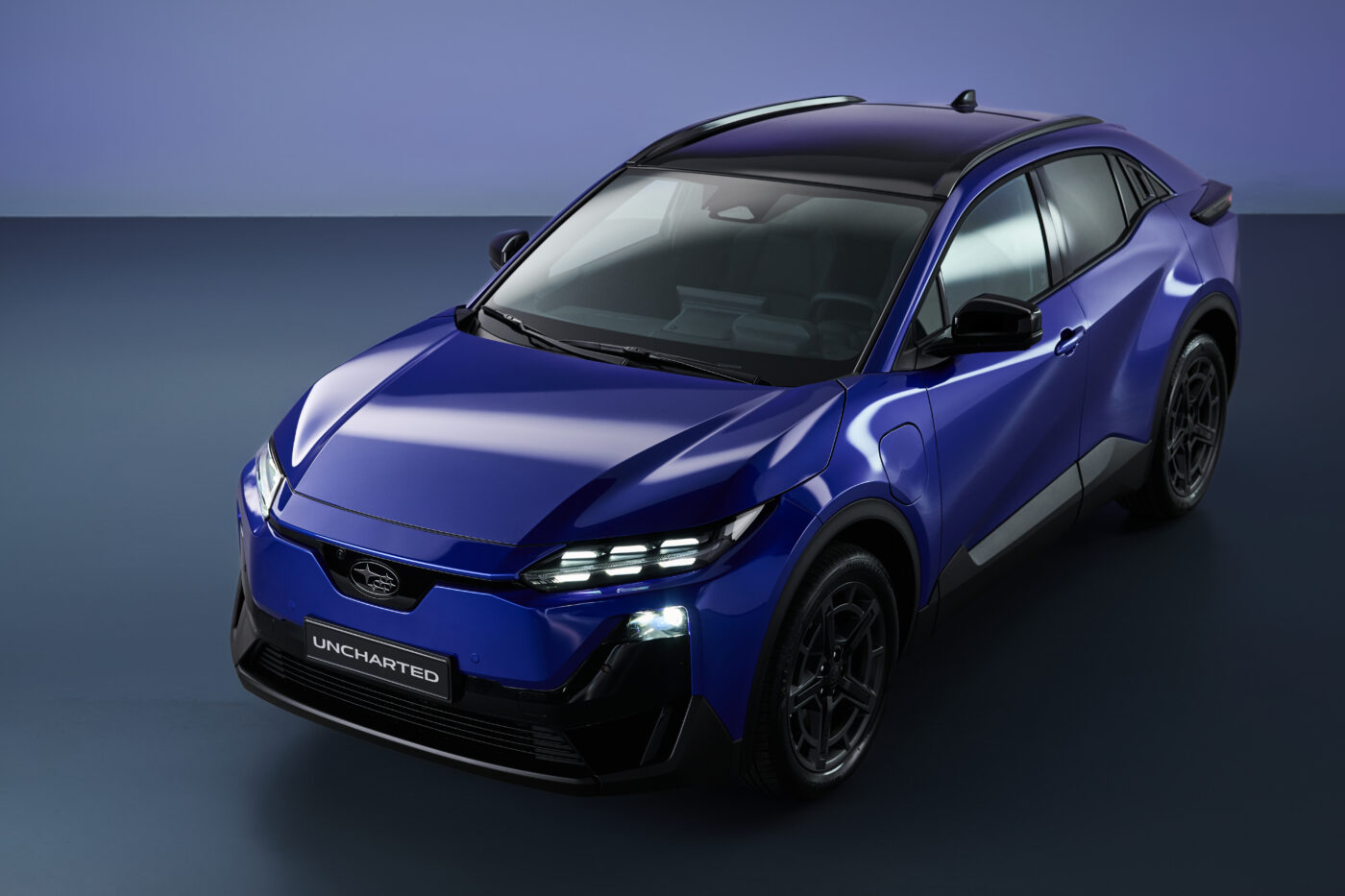 Robustness meets agility
Robustness meets agility
The Subaru Uncharted will be slightly more compact and, with a length of 4.51 meters, almost 20 centimeters shorter than the Solterra from 2026. The city SUV has 21 centimetres of ground clearance, is equipped with X-MODE and has suspension and steering optimized by Subaru engineers. With a turning circle of 11 meters, it is also very agile. Inside, there is an ergonomic steering wheel, 14-inch infotainment display and two wireless cell phone charging stations so that the driver and front passenger can now charge their smartphones.
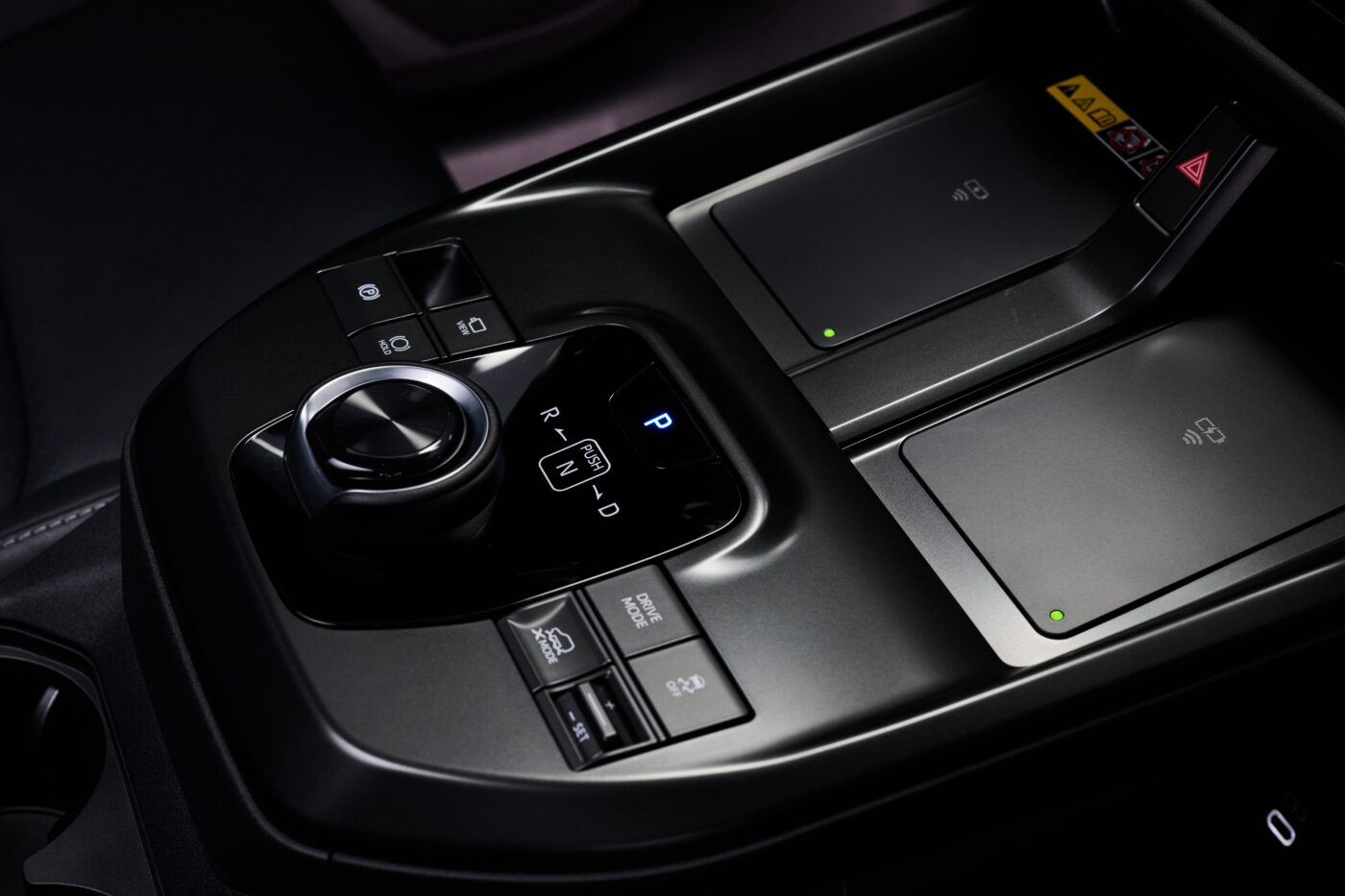 The Uncharted comes with three variants of electric drive. As with the Solterra, the all-wheel drive model with the 77 kWh battery delivers 249 kW/338 hp for dynamic performance. They allow the Uncharted to sprint from 0 to 100 km/h in 5.0 seconds. It also has an electric range of 470 km and a towing capacity of 1500 kg. For those who do not necessarily have to rely on 4×4, the electric Subaru is available as an inexpensive front-wheel drive model with a smaller drive battery (57.7 kWh) and a range of 445 km or the larger 77 kWh battery, with which the Uncharted can then boast a full 585 km electric range.
The Uncharted comes with three variants of electric drive. As with the Solterra, the all-wheel drive model with the 77 kWh battery delivers 249 kW/338 hp for dynamic performance. They allow the Uncharted to sprint from 0 to 100 km/h in 5.0 seconds. It also has an electric range of 470 km and a towing capacity of 1500 kg. For those who do not necessarily have to rely on 4×4, the electric Subaru is available as an inexpensive front-wheel drive model with a smaller drive battery (57.7 kWh) and a range of 445 km or the larger 77 kWh battery, with which the Uncharted can then boast a full 585 km electric range.
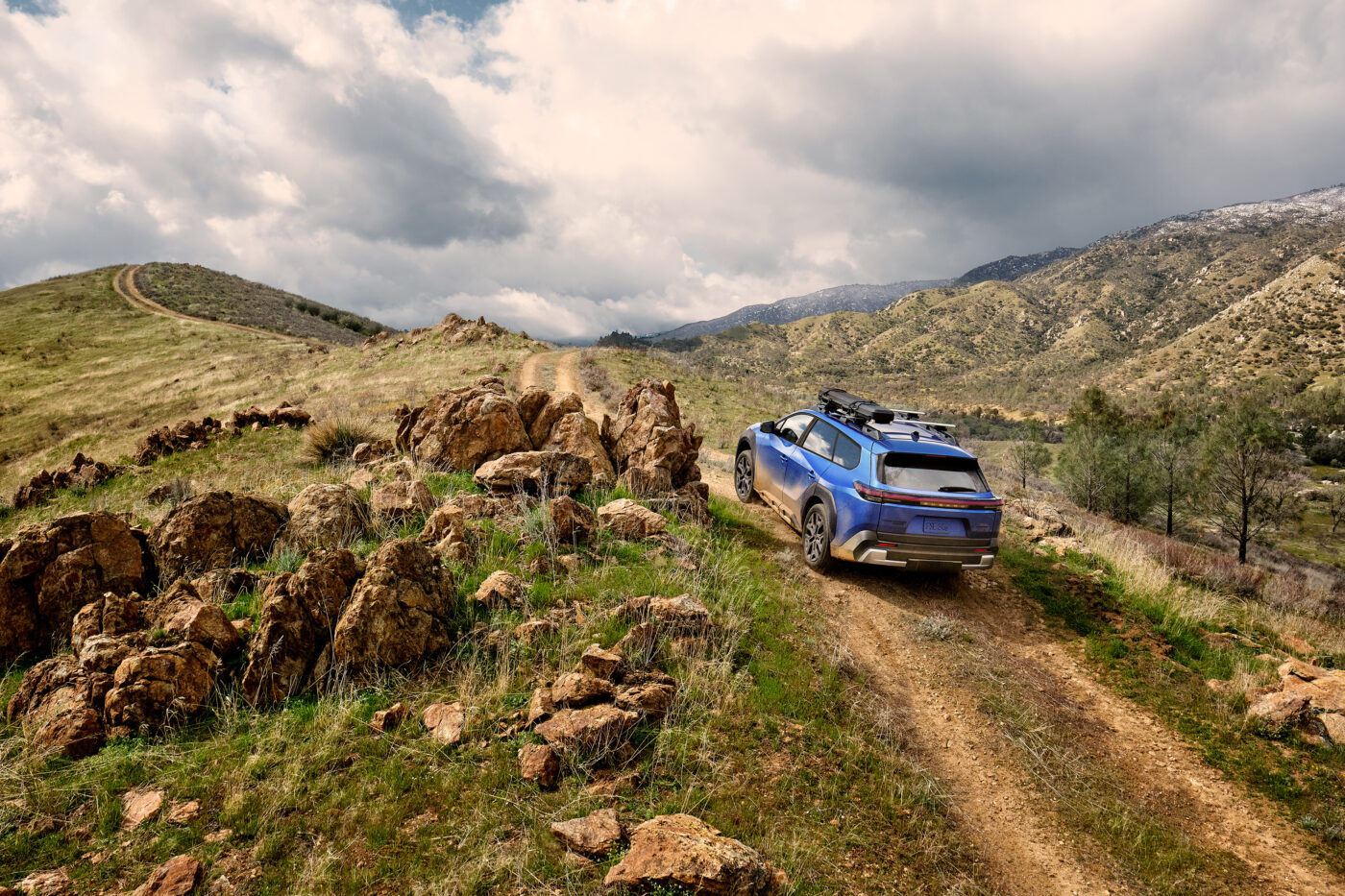 Flagship also under power
Flagship also under power
In 2026, Subaru will also electrify its crossover pioneer Outback. As an e-Outback, it combines everything that drivers have so far appreciated about its proven 2.5-liter boxer engine and the combustion engine version: Versatility, performance and reliability. These characteristics are now complemented by impressive electric driving performance and an electric range of over 450 km thanks to the 74.7 kWh battery. The Subaru flagship with its symmetrical all-wheel drive, X-Mode and 21 centimeters of ground clearance will soon have a 276 kW/375 hp electric drive to provide the necessary thrust. The "Subi", which is around 4.85 meters long, not only shines with its usual spaciousness, but is also extremely athletic: from 0 to 100 km/h in just 4.4 seconds! The E-Outback also boasts a robust look, roof rails and 18- or 20-inch alloy wheels. And when it comes to safety, it continues to impress with its practical emergency braking function and other helpers based on the EyeSight driver assistance system.
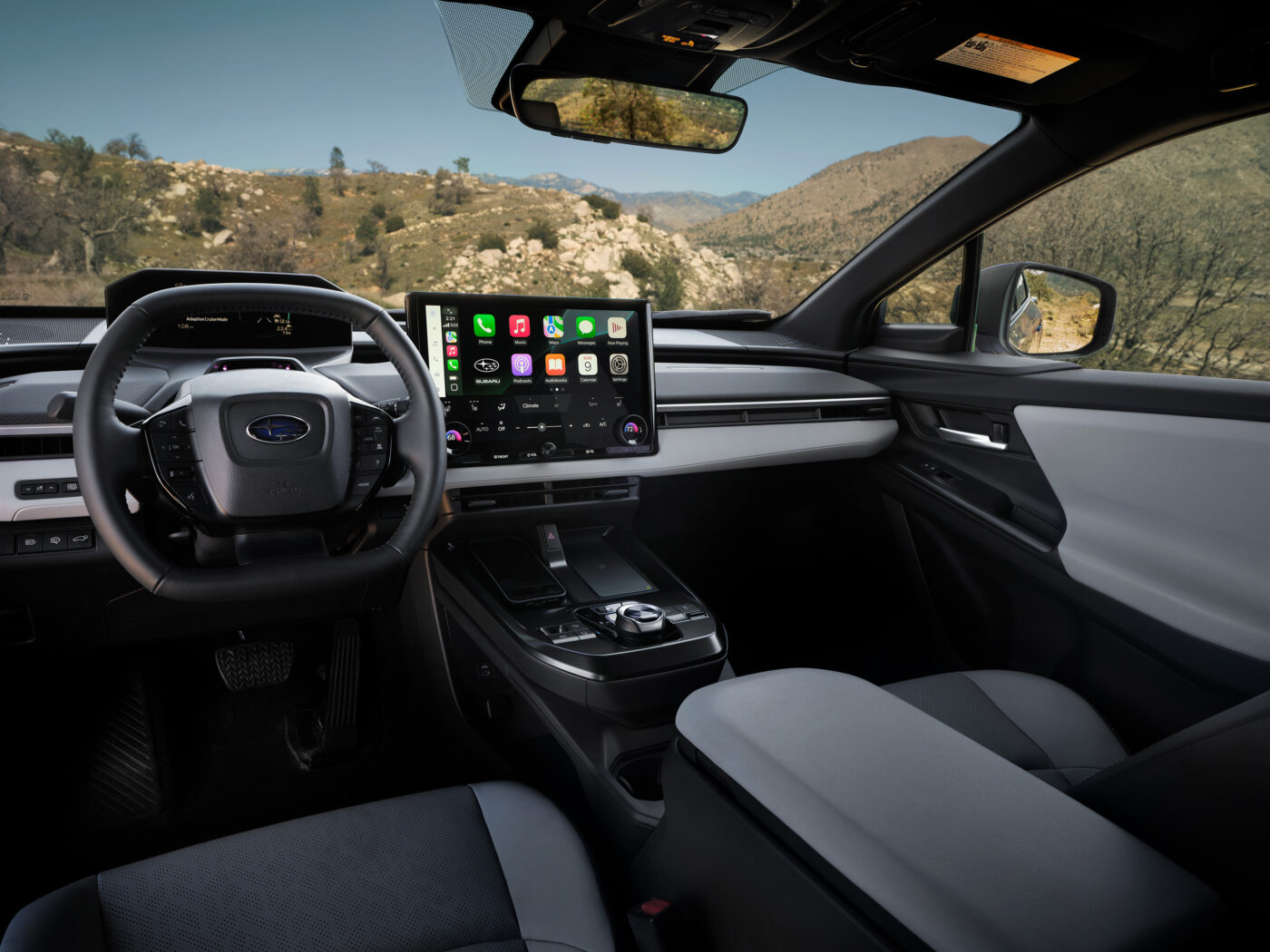








 As a reward, the current generation of the XC60 has been given a visual and technical fine-tuning. To recognize the exterior changes, however, you have to be a connoisseur or lover of the Swedes: The front grille with the typical "Iron Mark" logo has been adapted, as have the front air intakes. At the rear, the tail lights have been kept darker, some new wheel designs and also new exterior colors - including the green-greyish "Forest Lake" and the pink to violet undertone "Aurora Silver", two completely new colors - have been added, that's it.
As a reward, the current generation of the XC60 has been given a visual and technical fine-tuning. To recognize the exterior changes, however, you have to be a connoisseur or lover of the Swedes: The front grille with the typical "Iron Mark" logo has been adapted, as have the front air intakes. At the rear, the tail lights have been kept darker, some new wheel designs and also new exterior colors - including the green-greyish "Forest Lake" and the pink to violet undertone "Aurora Silver", two completely new colors - have been added, that's it. Inside, there is the typical Swedish chic with pretty wood inlays, fine leather, chrome air vents and excellent workmanship. Practical: the wireless smartphone charging station in the center console is now easier to access. And the infotainment system, which has already celebrated its premiere in the two electric models EX30 and EX90, is now also used in the XC60. Its layout has been adapted. More importantly, various Google functions are now integrated and there is now the option of online updates. The new functions and applications are accessed via the free-standing, central 11.2-inch touchscreen, which enables sharp displays thanks to increased pixel density. The new system is also more than twice as responsive.
Inside, there is the typical Swedish chic with pretty wood inlays, fine leather, chrome air vents and excellent workmanship. Practical: the wireless smartphone charging station in the center console is now easier to access. And the infotainment system, which has already celebrated its premiere in the two electric models EX30 and EX90, is now also used in the XC60. Its layout has been adapted. More importantly, various Google functions are now integrated and there is now the option of online updates. The new functions and applications are accessed via the free-standing, central 11.2-inch touchscreen, which enables sharp displays thanks to increased pixel density. The new system is also more than twice as responsive. In addition to the two-liter petrol engine with all-wheel drive and 184 kW/250 hp, the compact SUV is powered by two plug-in hybrids. In the T6 Twin Engine, the 18 kWh battery is combined with a four-cylinder engine with 186 kW/253 hp, which gives a system output of 293 kW/350 hp and an electric range of 65 to 80 kilometers. In the T8 Twin Engine, the drive battery is even paired with 228 kW/310 hp from the combustion engine, which gives the SUV even more dynamism and sportiness. Despite weighing over two tons, the XC60 accelerates to 100 km/h in under five seconds thanks to a total of 335 kW/455 hp. However, if you take advantage of this sporty acceleration too often, the electric range dwindles noticeably. But it's still fun!
In addition to the two-liter petrol engine with all-wheel drive and 184 kW/250 hp, the compact SUV is powered by two plug-in hybrids. In the T6 Twin Engine, the 18 kWh battery is combined with a four-cylinder engine with 186 kW/253 hp, which gives a system output of 293 kW/350 hp and an electric range of 65 to 80 kilometers. In the T8 Twin Engine, the drive battery is even paired with 228 kW/310 hp from the combustion engine, which gives the SUV even more dynamism and sportiness. Despite weighing over two tons, the XC60 accelerates to 100 km/h in under five seconds thanks to a total of 335 kW/455 hp. However, if you take advantage of this sporty acceleration too often, the electric range dwindles noticeably. But it's still fun! Just like every drive in the dignified Swedish car. Thanks to the improved noise comfort, including the laminated windows, we now glide along in the XC60 even more comfortably and quietly than before. The revised Volvo XC60 can be ordered from CHF 66,700, while the plug-in hybrid versions start at CHF 79,900.
Just like every drive in the dignified Swedish car. Thanks to the improved noise comfort, including the laminated windows, we now glide along in the XC60 even more comfortably and quietly than before. The revised Volvo XC60 can be ordered from CHF 66,700, while the plug-in hybrid versions start at CHF 79,900.
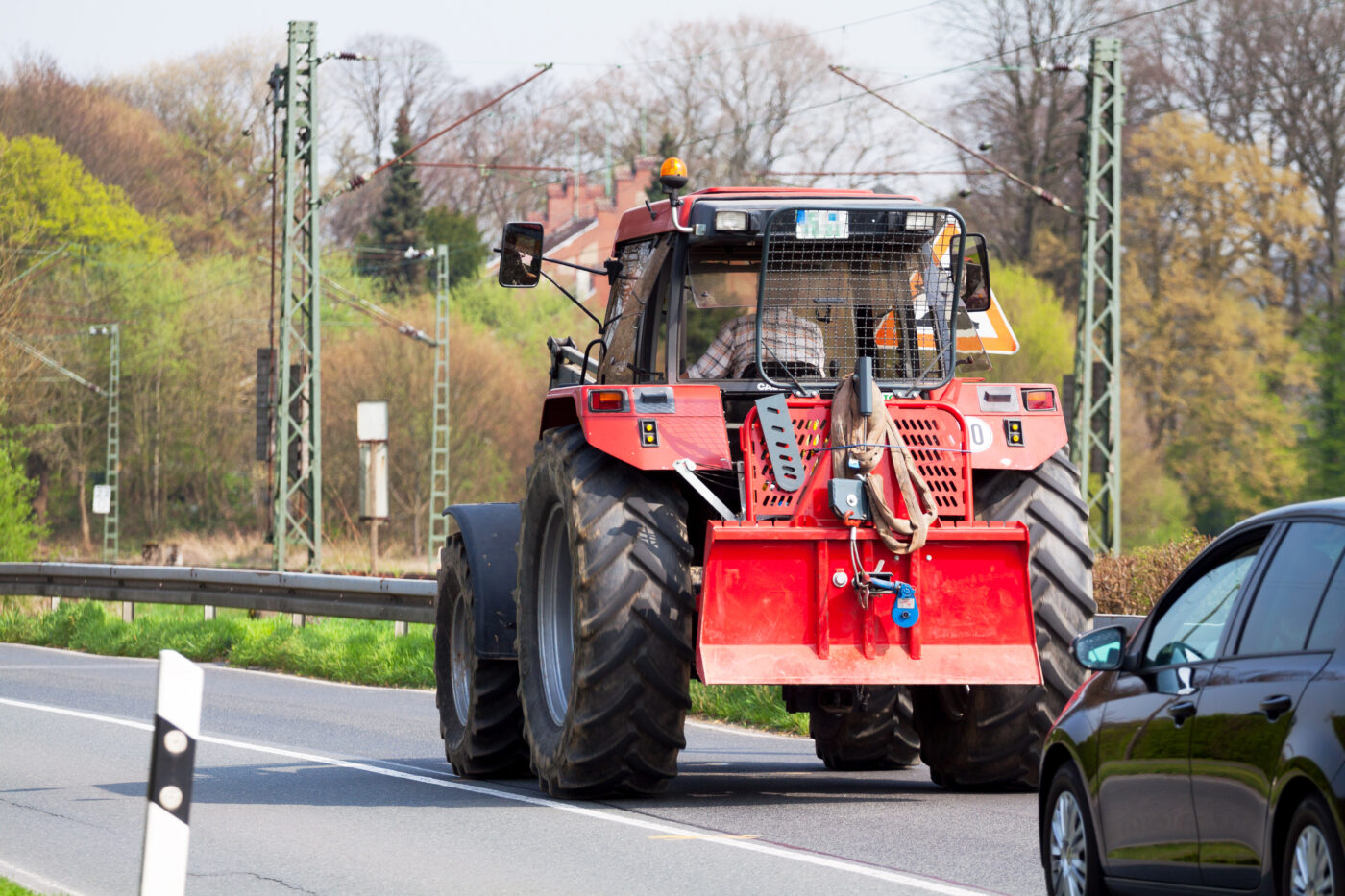
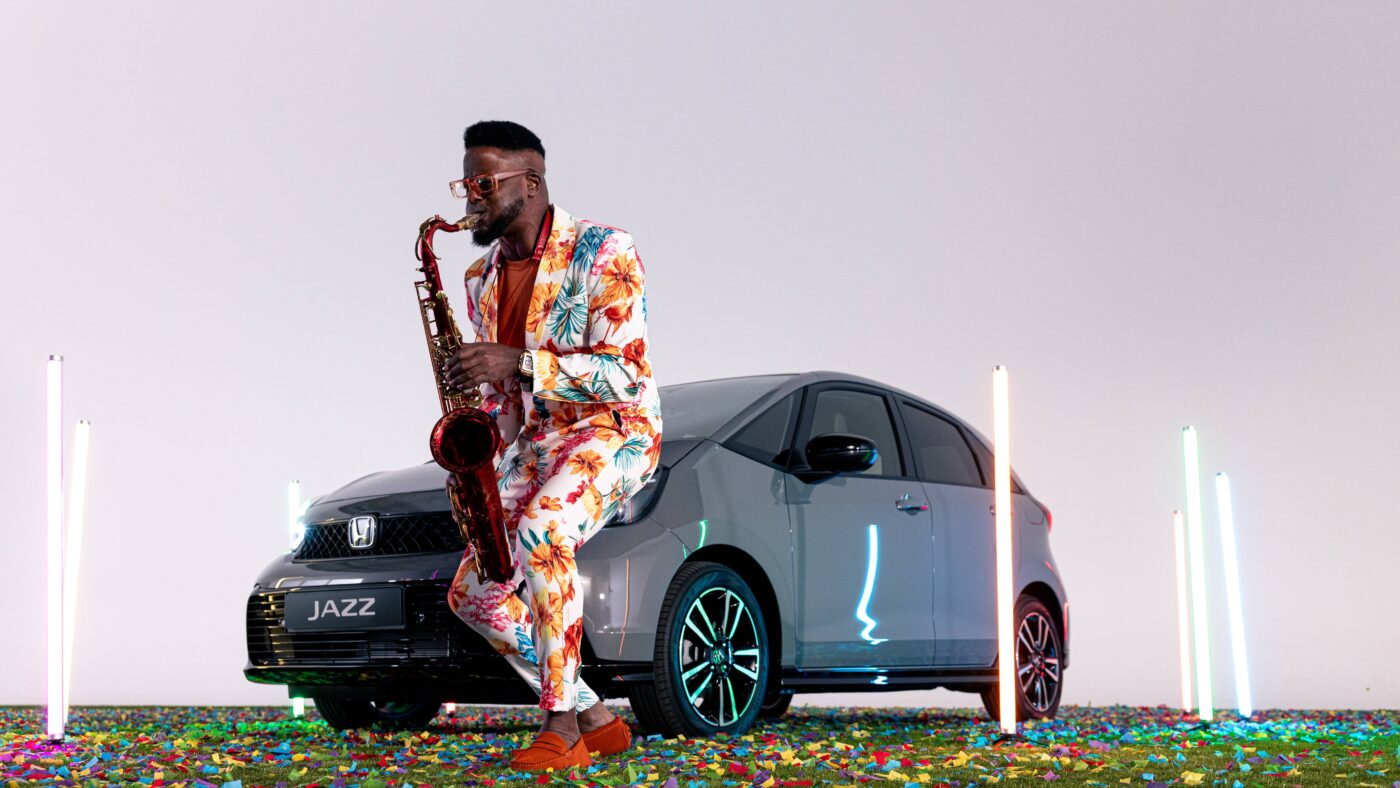

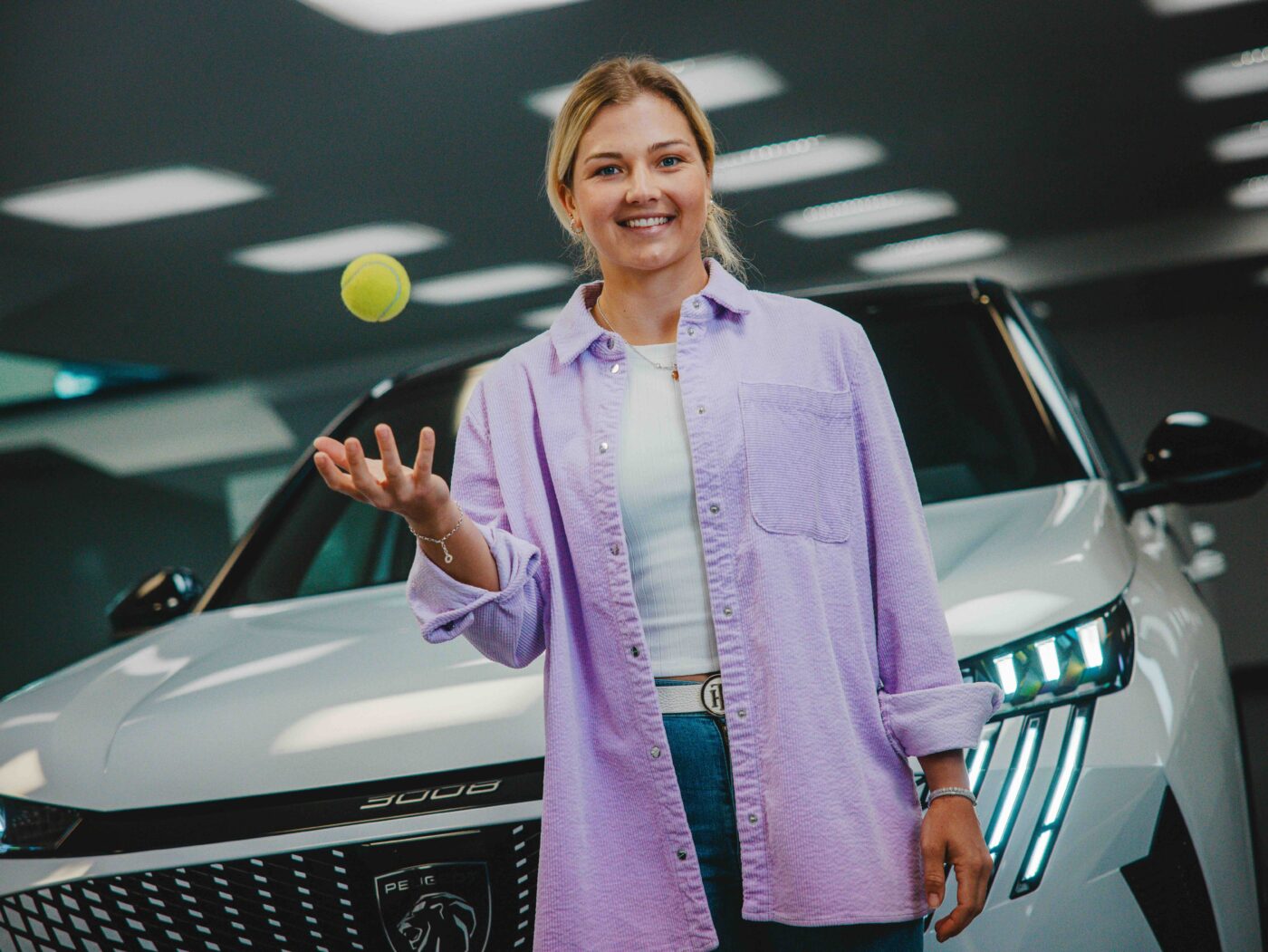

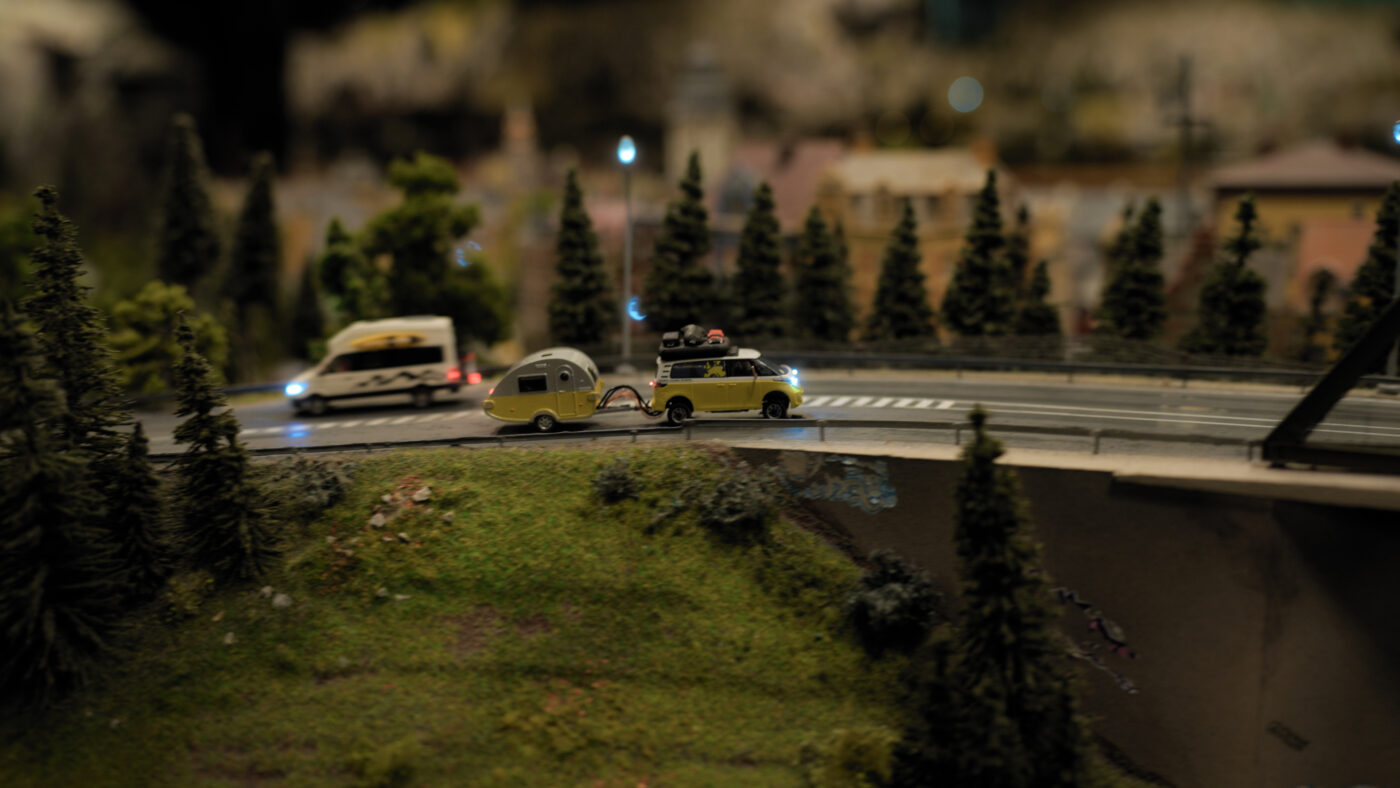
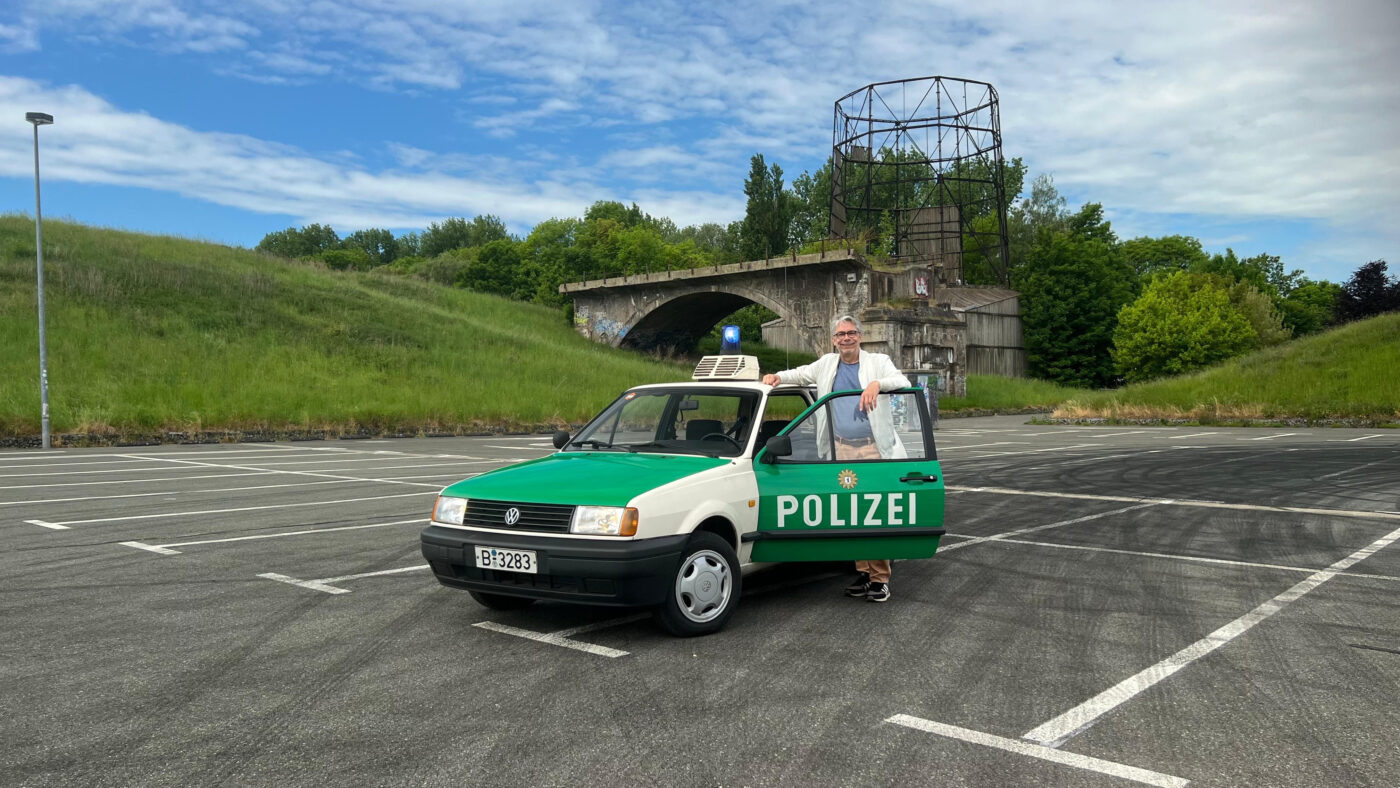
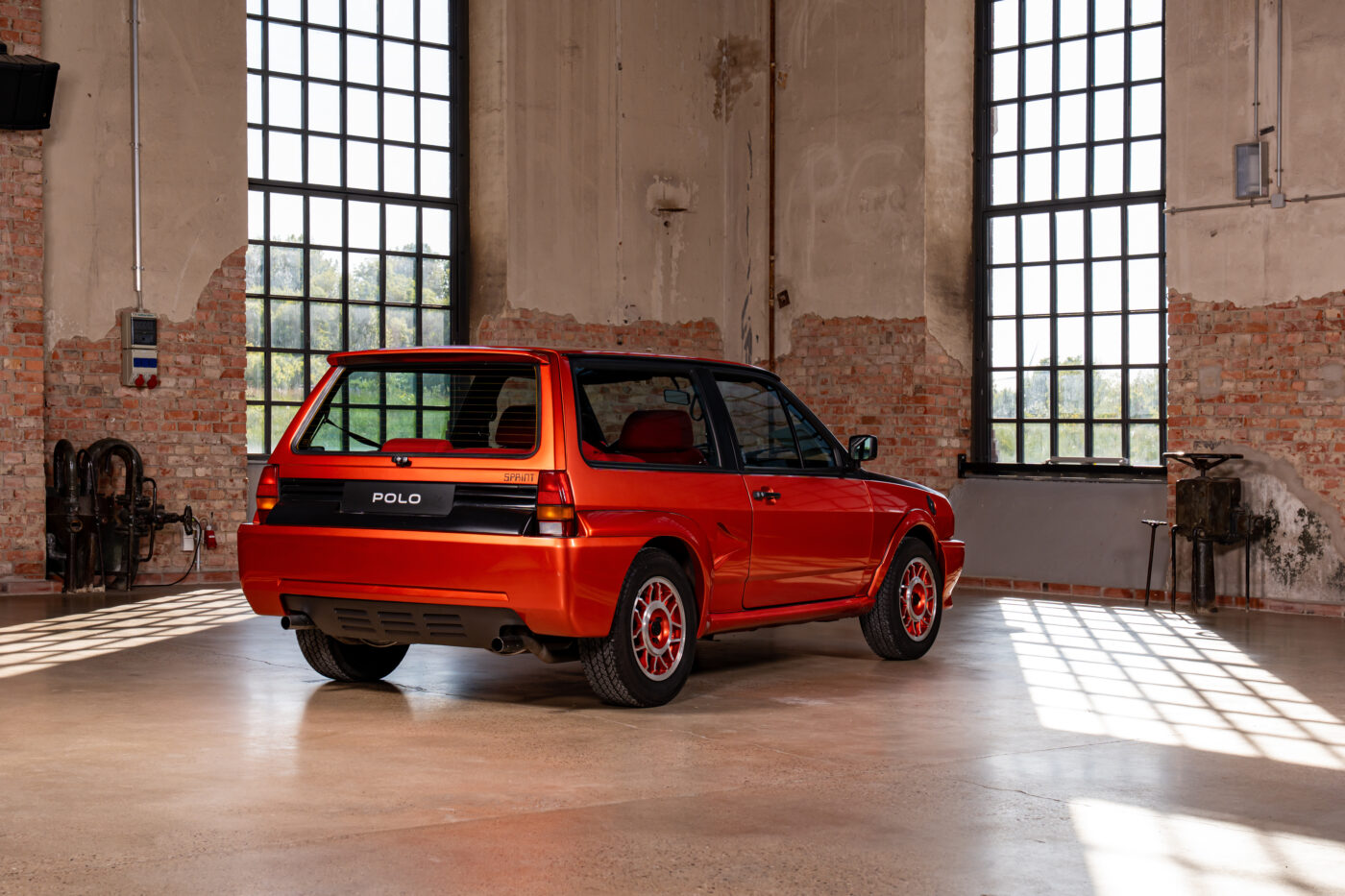
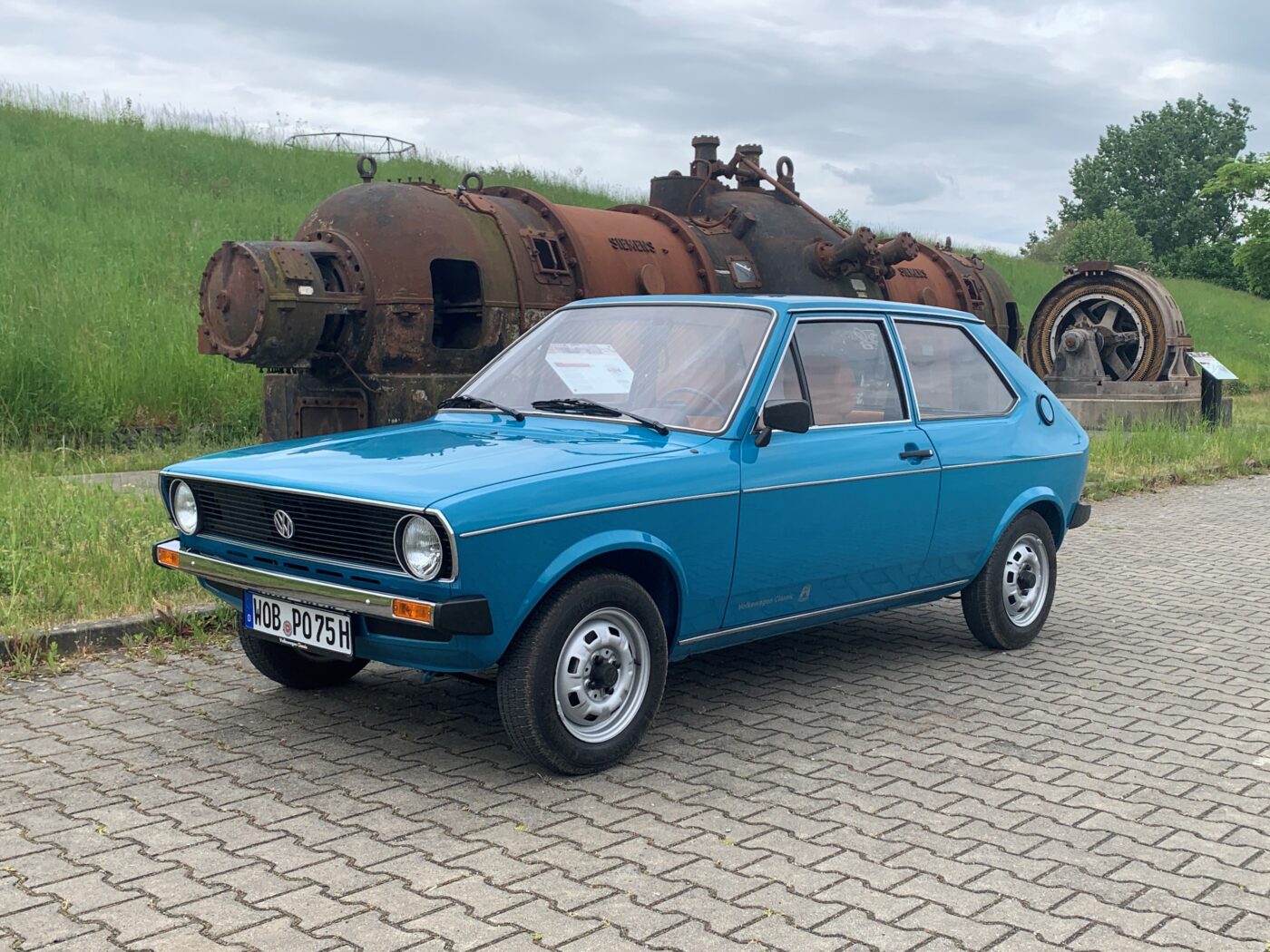
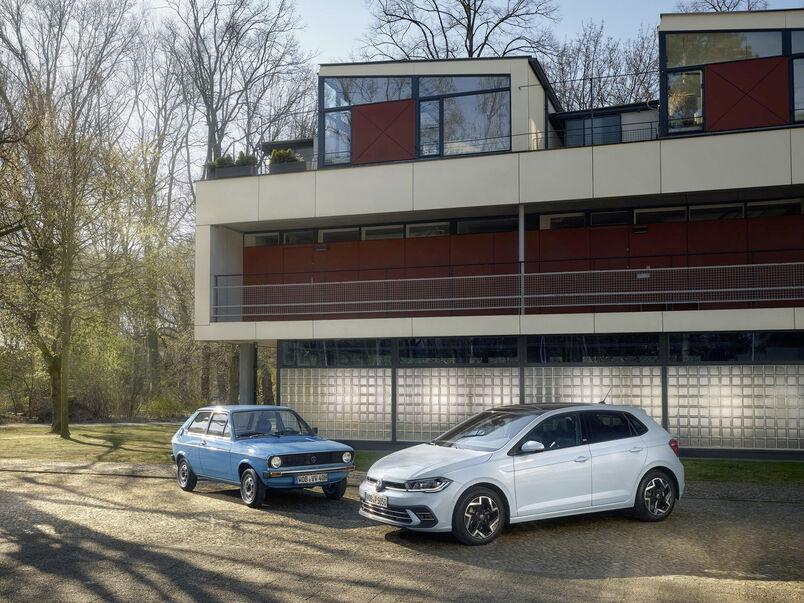
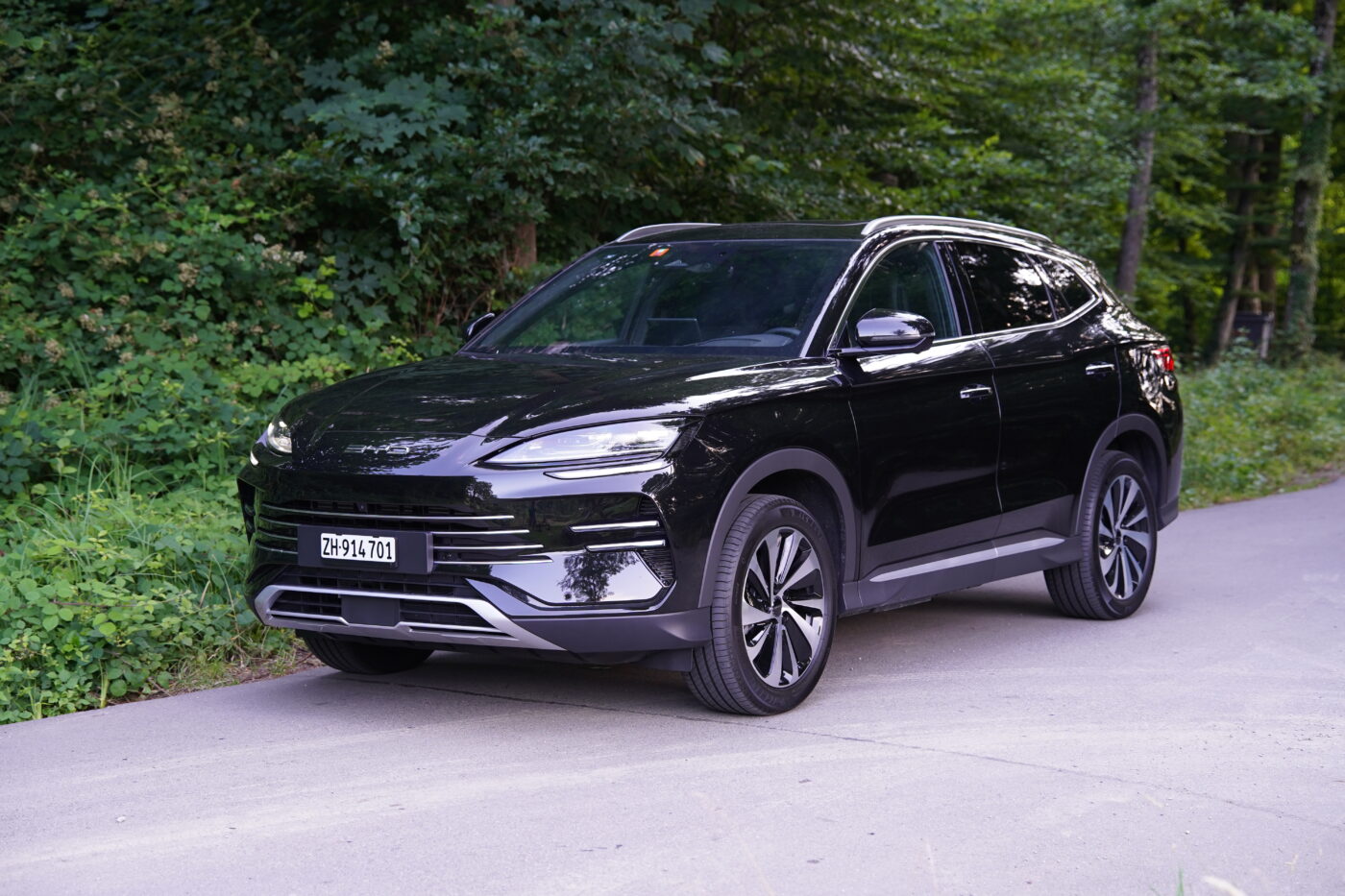

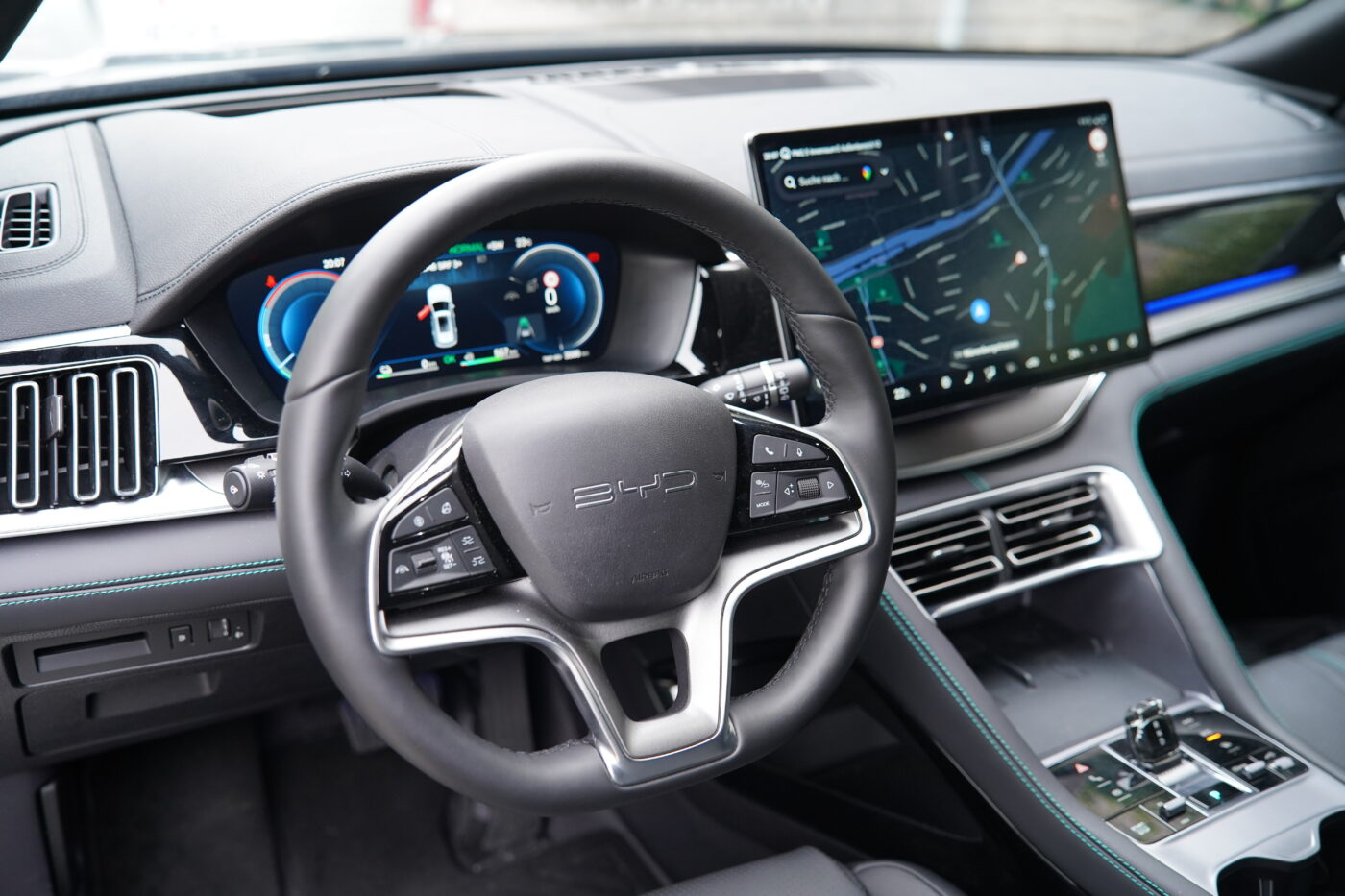
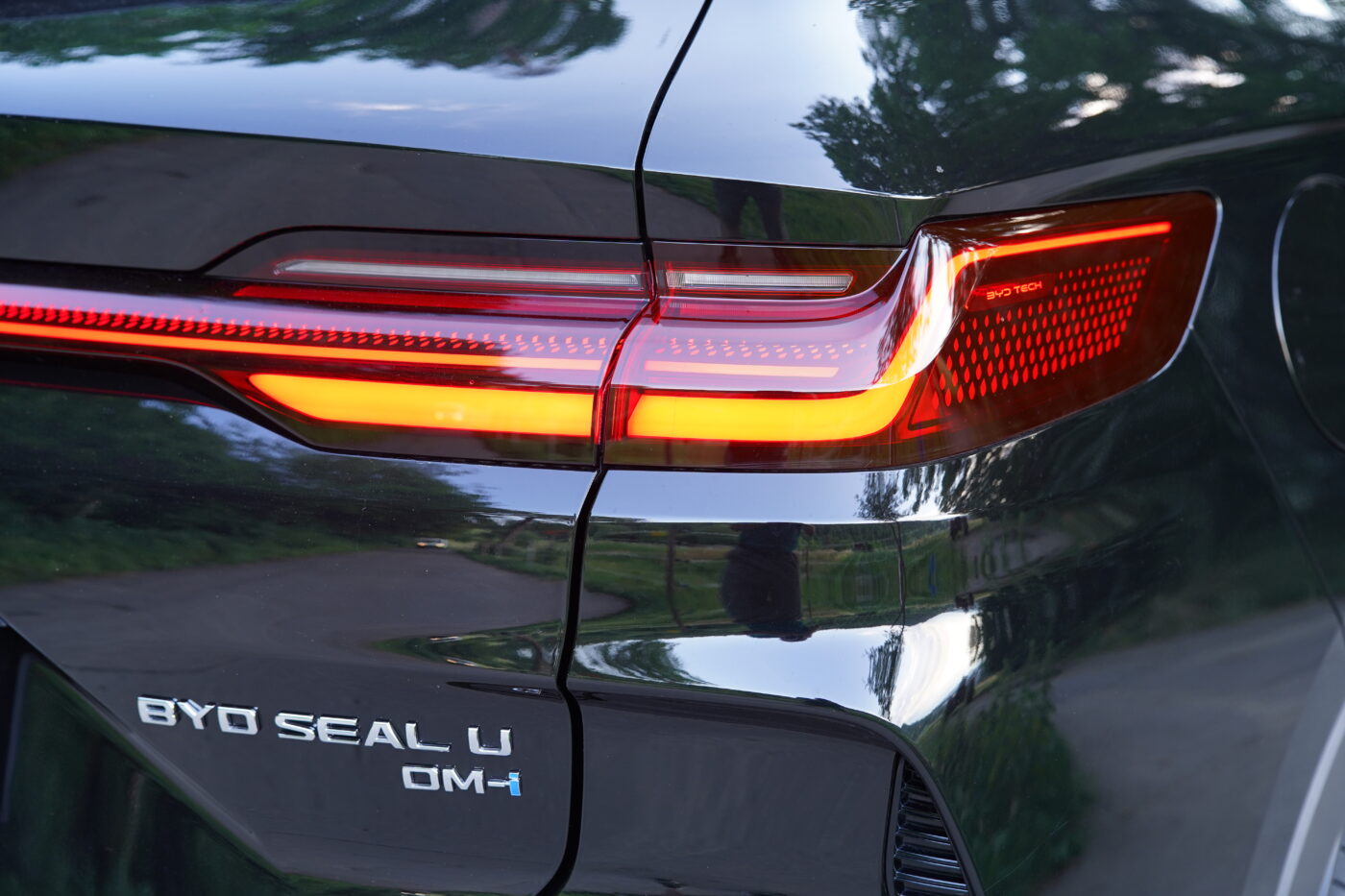 The BYD interior is beautifully made and impeccably finished. Not a plastic desert, but with soft-touch surfaces and double contrast stitching: The Chinese car really makes a statement here. The highlight is not the practical wireless charging surface for two smartphones, but the rotating 15.6-inch touchscreen in the cockpit. It provides an aha effect for 100 percent of passengers. You can choose whether the display should be in portrait or landscape format in the center of the cockpit - really cool and, depending on the display, really practical!
The BYD interior is beautifully made and impeccably finished. Not a plastic desert, but with soft-touch surfaces and double contrast stitching: The Chinese car really makes a statement here. The highlight is not the practical wireless charging surface for two smartphones, but the rotating 15.6-inch touchscreen in the cockpit. It provides an aha effect for 100 percent of passengers. You can choose whether the display should be in portrait or landscape format in the center of the cockpit - really cool and, depending on the display, really practical!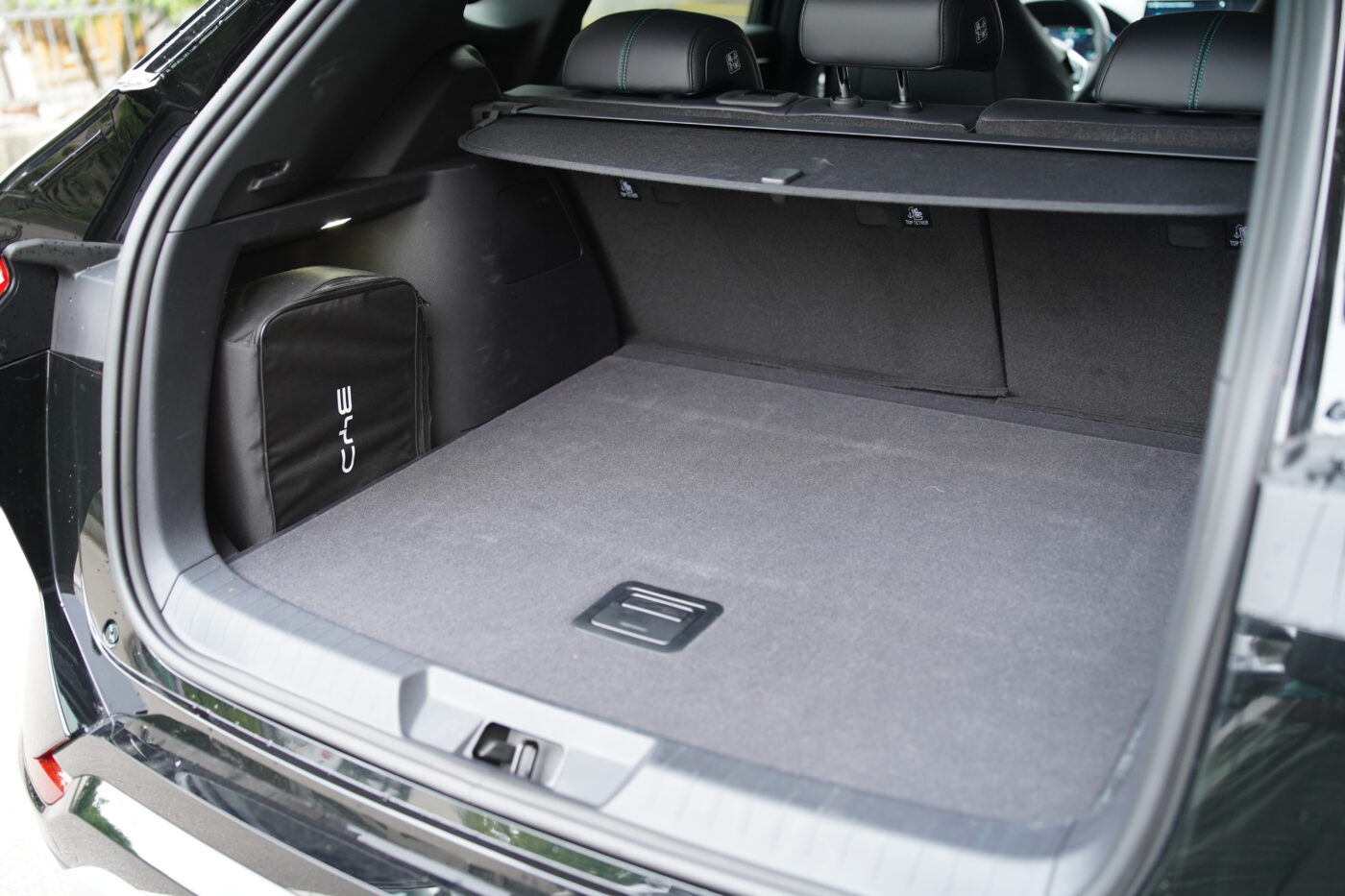 The 4.78-metre-long and 1.89-metre-wide family SUV also shows its practical side in terms of space. There is even enough head and legroom in the rear, and the trunk has a capacity of 425 liters. As the rear seat can be folded down in two parts (60:40 percent), the storage space can be expanded to 1440 liters. That's impressive, as is the price for our 4×4 test vehicle. It is available from 49,900 francs. Not cheap, but certainly attractive and fair for what is on offer. And to dispel any doubts about the quality of the Chinese SUV among Swiss customers, there is also a six-year or 150,000 kilometer full warranty and an eight-year or 200,000 kilometer battery warranty. That gives peace of mind.
The 4.78-metre-long and 1.89-metre-wide family SUV also shows its practical side in terms of space. There is even enough head and legroom in the rear, and the trunk has a capacity of 425 liters. As the rear seat can be folded down in two parts (60:40 percent), the storage space can be expanded to 1440 liters. That's impressive, as is the price for our 4×4 test vehicle. It is available from 49,900 francs. Not cheap, but certainly attractive and fair for what is on offer. And to dispel any doubts about the quality of the Chinese SUV among Swiss customers, there is also a six-year or 150,000 kilometer full warranty and an eight-year or 200,000 kilometer battery warranty. That gives peace of mind.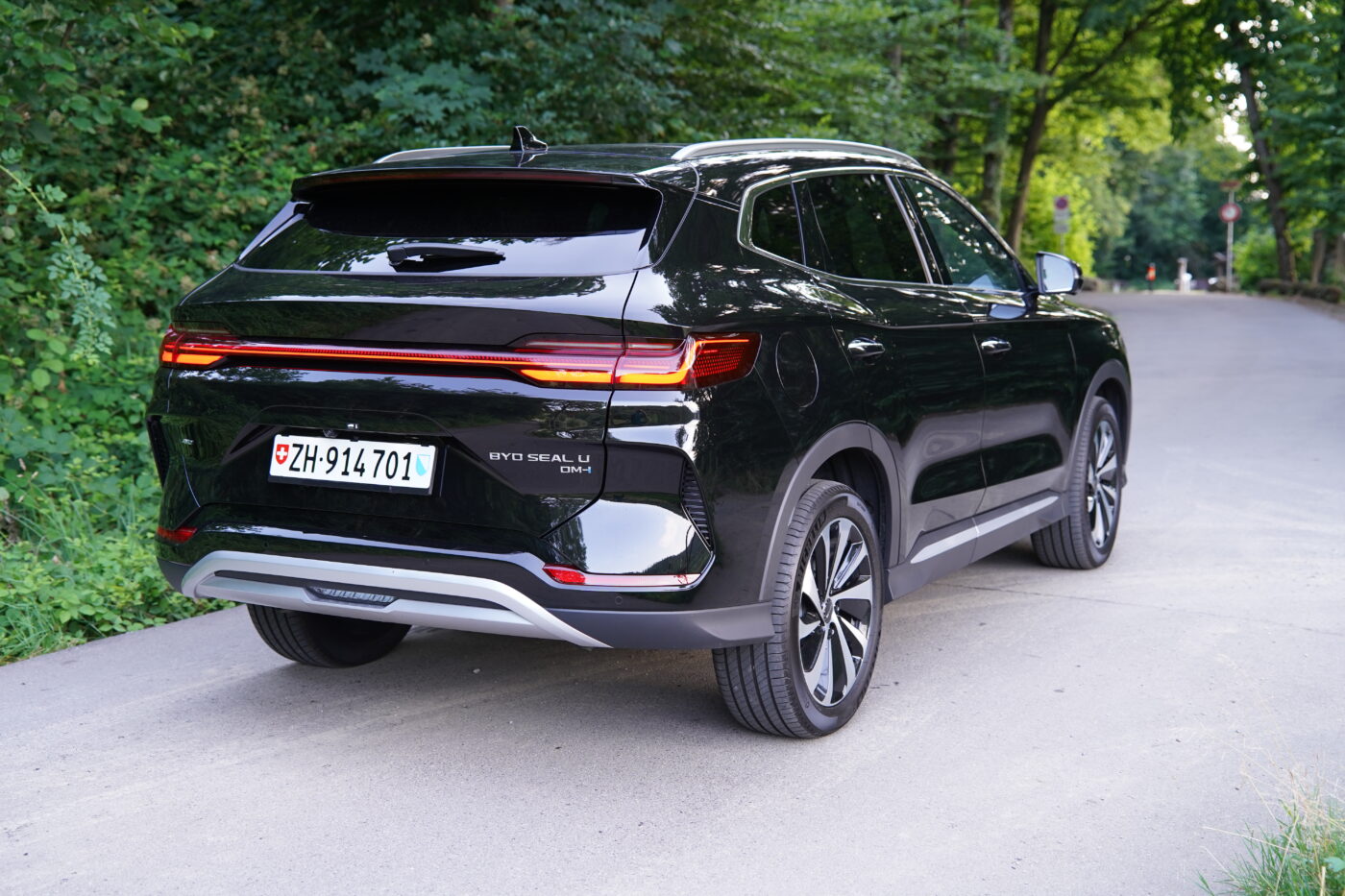 Expert opinion: BYD Seal U DM-i Design
Expert opinion: BYD Seal U DM-i Design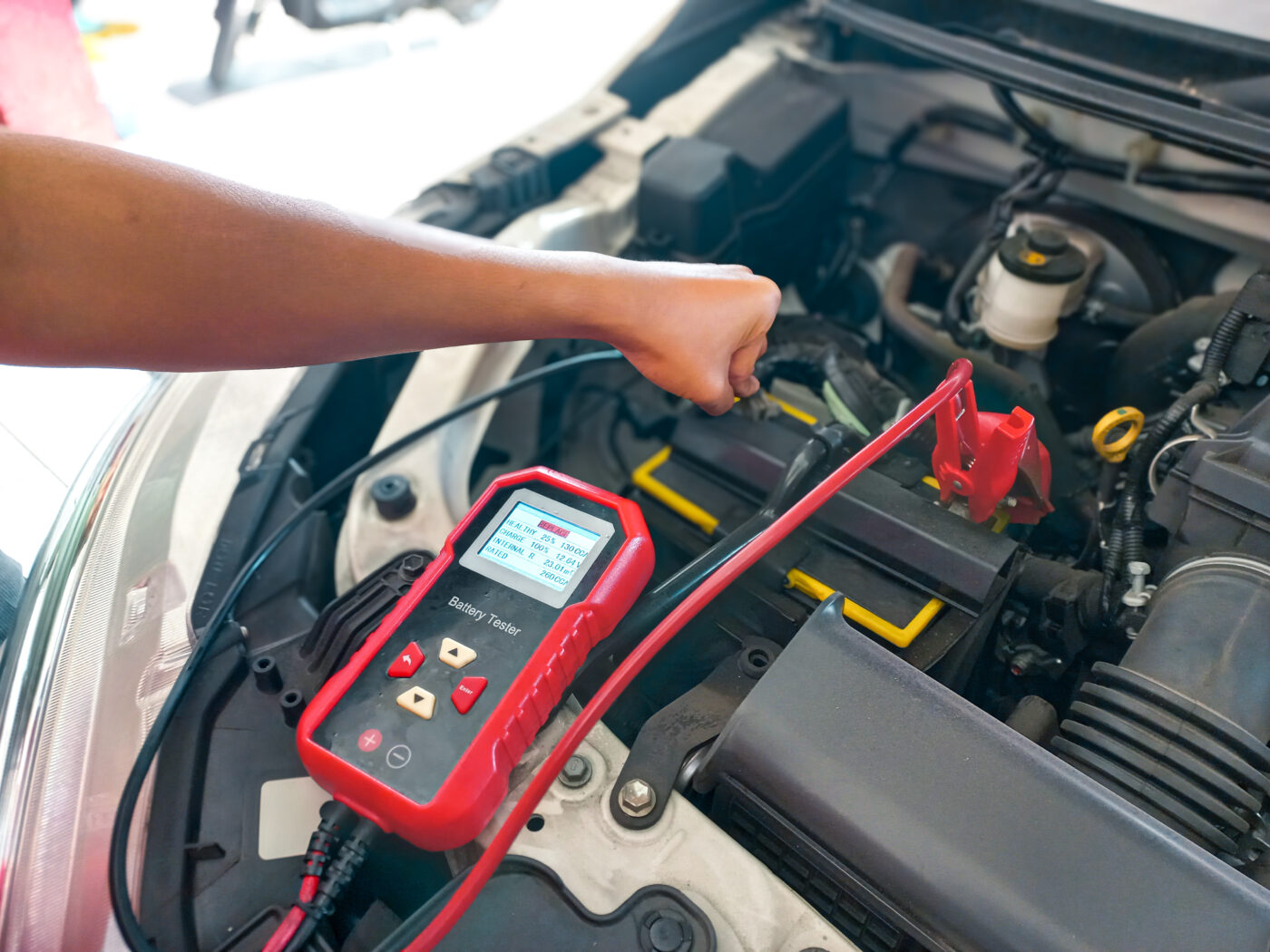

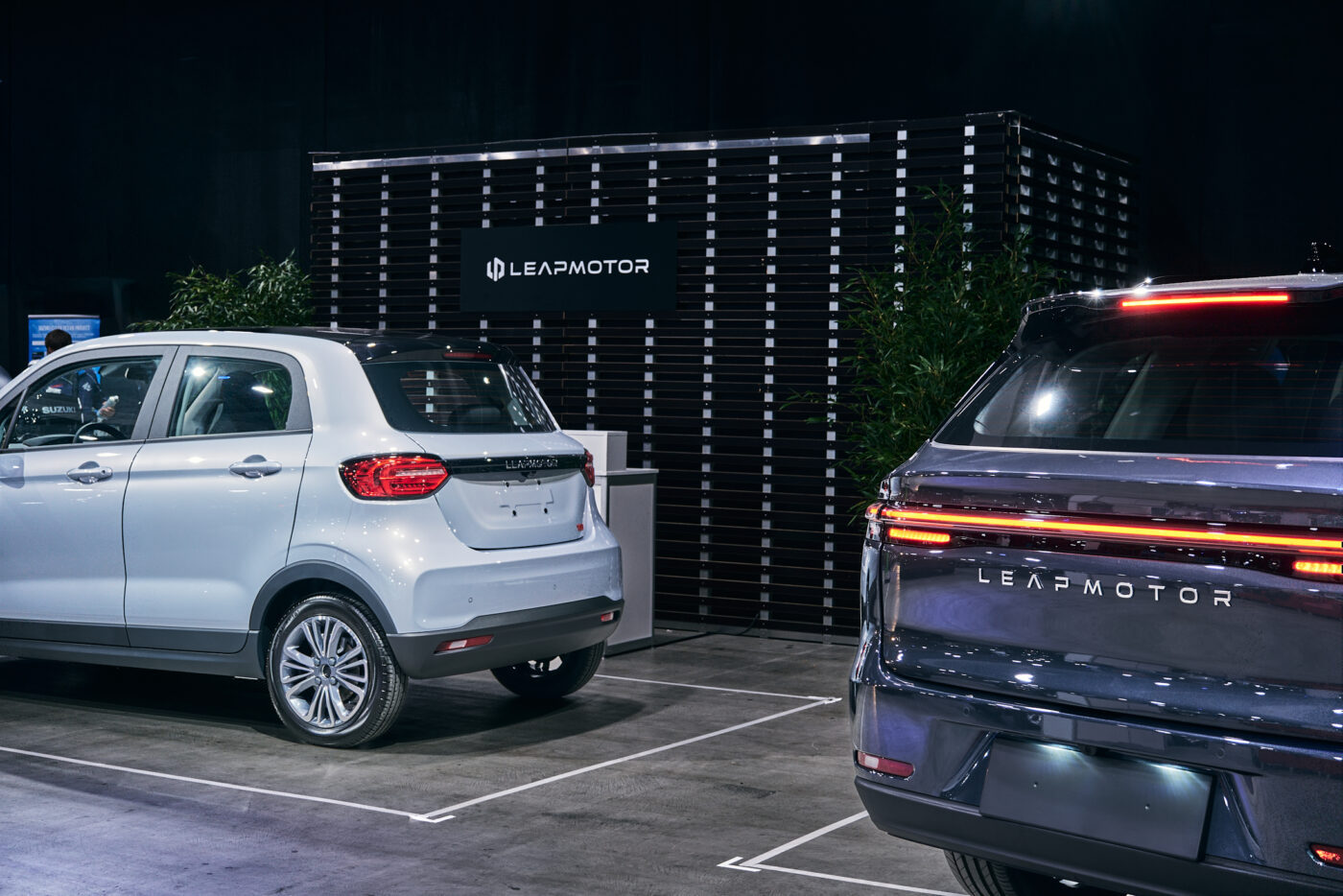

 The main argument for buying is definitely the price-performance ratio, says Roger Küng from the
The main argument for buying is definitely the price-performance ratio, says Roger Küng from the  The plans are ambitious: The current market share of 0.3 percent in Switzerland is to be significantly increased in the future, and seven models are to be on offer by 2027. A new variant of the C10 will celebrate its world premiere at Auto Zurich in November - with all-wheel drive. According to von Bachellé, the manufacturer confirmed its development within two weeks in response to an explicit request from Switzerland. This makes it clear that the brand really is moving at what is known as "China speed" and is pushing ahead with projects and developments in record time. International growth too
The plans are ambitious: The current market share of 0.3 percent in Switzerland is to be significantly increased in the future, and seven models are to be on offer by 2027. A new variant of the C10 will celebrate its world premiere at Auto Zurich in November - with all-wheel drive. According to von Bachellé, the manufacturer confirmed its development within two weeks in response to an explicit request from Switzerland. This makes it clear that the brand really is moving at what is known as "China speed" and is pushing ahead with projects and developments in record time. International growth too 
 Inside, the new Grandis combines functionality and utility with connectivity and quality. The variably adjustable rear seat bench can be moved forward or backward by up to 16 centimetres to create even more luggage space (434 to 1455 liters with the rear seats folded down) or to give the occupants in the rear seats more legroom. The attention to detail and the use of high-quality materials convey an atmosphere of well-being and spaciousness, which is further enhanced by the large panoramic glass roof. The electrically dimmable glass roof, which is covered with an electrochromic film, allows passengers to effortlessly regulate the light transmission at the touch of a button and thus individually adjust the amount of light entering the interior.
Inside, the new Grandis combines functionality and utility with connectivity and quality. The variably adjustable rear seat bench can be moved forward or backward by up to 16 centimetres to create even more luggage space (434 to 1455 liters with the rear seats folded down) or to give the occupants in the rear seats more legroom. The attention to detail and the use of high-quality materials convey an atmosphere of well-being and spaciousness, which is further enhanced by the large panoramic glass roof. The electrically dimmable glass roof, which is covered with an electrochromic film, allows passengers to effortlessly regulate the light transmission at the touch of a button and thus individually adjust the amount of light entering the interior. The Mitsubishi, which will roll off the production line in Valladolid, Spain, from the last quarter of 2025, will be powered by a mild hybrid or full hybrid drive. Both the 1.3-liter mild hybrid variant (103 kW/140 hp) combined with a six-speed manual gearbox or seven-speed dual-clutch automatic, as well as the 1.8-liter full hybrid variant (116 kW/158 hp) impress with low fuel consumption and powerful acceleration. The various drive modes and power delivery are optimized according to power requirements. The Grandis is also prepared for all eventualities, as it has a whole range of advanced assistance systems.
The Mitsubishi, which will roll off the production line in Valladolid, Spain, from the last quarter of 2025, will be powered by a mild hybrid or full hybrid drive. Both the 1.3-liter mild hybrid variant (103 kW/140 hp) combined with a six-speed manual gearbox or seven-speed dual-clutch automatic, as well as the 1.8-liter full hybrid variant (116 kW/158 hp) impress with low fuel consumption and powerful acceleration. The various drive modes and power delivery are optimized according to power requirements. The Grandis is also prepared for all eventualities, as it has a whole range of advanced assistance systems.

 Cool head-up display
Cool head-up display Silent space glider
Silent space glider Offer has its price
Offer has its price Expert opinion: VW ID.7 GTX Tourer
Expert opinion: VW ID.7 GTX Tourer